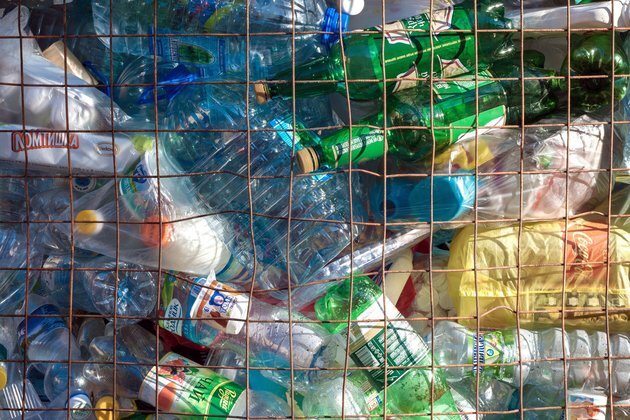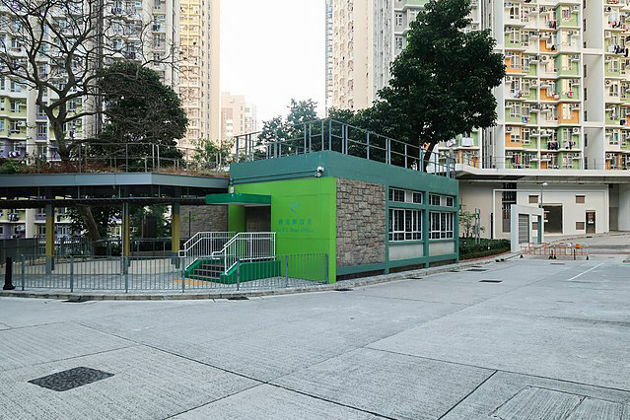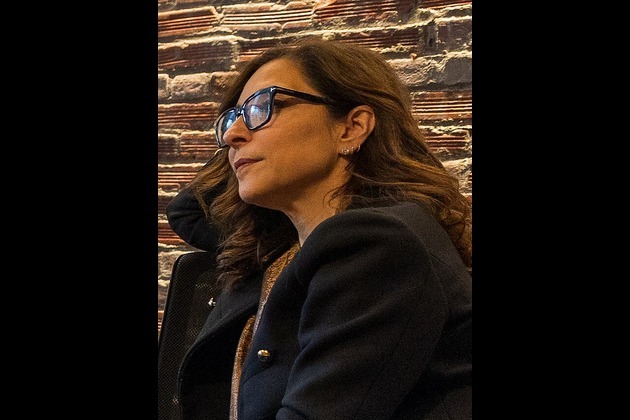Curious Kids: Can plastic waste be made into bricks for new houses?
The Conversation
19 Apr 2021, 20:10 GMT+10

Across the world there are about 6.3 billion metric tons of plastic waste. It's in our water, our air, the fish we eat and the soil our vegetables grow in.
In fact only 21% of all the plastic ever produced has been recycled or incinerated. So finding new ways to reuse it is crucial. With constant global demand for new buildings, using it to make construction materials is one of the big ideas.
In a building, the main purpose of a wall is to support the roof and the floor, and to provide protection from the weather. To build a wall, you have to layer up several elements - much like you might for a sandwich or a burger, only tipped on its side.
The outer wall is often made of brick (to protect against moisture) and the inner wall, of concrete mortar finished with plasterboard, ready for paint or wallpaper. In between, in modern buildings, there is usually a gap (so that humidity can escape, or to prevent it from coming in) filled with insulation: a sponge-like material that retains the heat. In colder countries especially, walls need to conserve heat as much as possible for energy efficiency.
Birdnest bricks
In 2019, I co-developed a brick made from household plastic waste using 3D printing. The idea for the brick came from an unexpected place: the south-east Asian Baya weaverbird's nest.
This pretty yellow grassland dweller is famous for its elaborately woven houses. The male bird builds the nest using his claws and beak to weave pliant grass stems and strips of palm fronds into a hat-like shape.
There's a larger upper part where the eggs will be placed, with an elongated tunnel-like entrance of sorts below it. The woven structure of the nest protects the eggs from the wind, rain and hot sun while they're being incubated.
We decided to try building a brick in a similar way. Instead of using plants fibres, we wanted to weave with plastic yarn or thread. First we shredded plastic flakes using discarded plastic water bottles to make the yarn.
Then we loaded that yarn into a 3D printer. The printer melts the yarn and, using a cone-shaped nozzle, deposits the melted plastic exactly where we want it to.
Think of it like icing a cake using your finest piping skills. We programmed the printer to criss-cross lines of melted plastic in a lattice or net-like pattern. Then we coated the lattice with a solid outer layer to trap the air within the cavity for better insulation.
Our bricks are very strong. Research has shown that they can match the strength of ordinary cement mortar bricks in the walls of five-storey buildings. They're also ten times better at insulating a wall than conventional clay bricks of the same size.
Life-sized Lego
Our weaverbird-inspired brick is believed to be the first of its kind. But it's not the only brick made from household plastic waste out there. Another model uses plastic shredded then ground down to a powder.
Fine grain plastic can be easily poured in to a mould (much like you fill ice cube trays with water) of the brick shape. The mould is then transferred to a furnace to melt the plastic powder before finally being compressed into a solid plastic brick.
The advantage of creating plastic bricks this way is that we can combine different types of plastic - from water bottles and milk cartons to food packaging and bottle tops - because they all melt at between 200C and 250C.
Also, they can be easily assembled and interlocked to produce a wall - a life-sized Lego project! Once the wall is built, you can add clay or cement cover it on both sides - inside and out - for a smoother finish.
Bottlehouse walls
The cheapest yet most ingenious method is to use plastic waste as it is, in combination with traditional building materials - and agricultural waste.
Researchers from De Montfort University worked with local entrepreneurs in Nigeria to develop a prototype bottlehouse. Discarded water bottles were filled with sand or water to create a weighted bottle brick, strong enough to build with, then bonded together with clay.
The one drawback with this method is that it doesn't retain heat. Instead, it cools a building down by absorbing sunlight, and preventing temperatures from rising inside. While that is exactly what you need in countries with tropical climates, UK weather calls for more warmth.
Aside from the need to adapt materials to the specific location - and weather - you're building in, you also need to be careful about the plastics used, as some can result in toxic emissions when exposed to UV light and high temperatures. Which is to say there's still a lot of research and work still to be done in this field.
Author: Karthikeyan Kandan - Associate Professor in Mechanical Engineering, De Montfort University 
 Share
Share
 Tweet
Tweet
 Share
Share
 Flip
Flip
 Email
Email
Watch latest videos
Subscribe and Follow
Get a daily dose of Asia Bulletin news through our daily email, its complimentary and keeps you fully up to date with world and business news as well.
News RELEASES
Publish news of your business, community or sports group, personnel appointments, major event and more by submitting a news release to Asia Bulletin.
More InformationInternational
SectionFrom France’s shores, desperate migrants look to reach British coast
ECAULT BEACH, France: On clear days, the white cliffs of the United Kingdom, are visible from northern France, where men, women, and...
CDC: US records 1,288 measles cases, most since 1992 outbreak
ATLANTA, Georgia: The United States is facing its worst measles outbreak in more than three decades, with 1,288 confirmed cases so...
Gaza War sucking life out of an Israeli generation
In the past month alone, 23 Israeli soldiers have been killed in Gaza—three more than the number of remaining living hostages held...
Faulty IT system at heart of UK Post Office scandal, says report
LONDON, U.K.: At least 13 people are believed to have taken their own lives as a result of the U.K.'s Post Office scandal, in which...
Travelers can now keep shoes on at TSA checkpoints
WASHINGTON, D.C.: Travelers at U.S. airports will no longer need to remove their shoes during security screenings, Department of Homeland...
Rubio impersonator used AI to reach officials via Signal: cable
WASHINGTON, D.C.: An elaborate impersonation scheme involving artificial intelligence targeted senior U.S. and foreign officials in...
Business
SectionAI boom propels Nvidia to historic market cap milestone
SAN FRANCISCO, California: Nvidia, the Silicon Valley chipmaker at the heart of the artificial intelligence boom, this week briefly...
AI saves $500 million for Microsoft as layoffs reshape strategy
REDMOND, Washington: Artificial intelligence is transforming Microsoft's bottom line. The company saved over US$500 million last year...
FTC’s rule to ease subscription cancellations struck down by court
WASHINGTON, D.C.: A federal rule designed to make it easier for Americans to cancel subscriptions has been blocked by a U.S. appeals...
Musk’s X loses CEO Linda Yaccarino amid AI backlash, ad woes
BASTROP, Texas: In a surprising turn at Elon Musk's X platform, CEO Linda Yaccarino announced she is stepping down, just months after...
Ex-UK PM Sunak takes advisory role at Goldman Sachs
NEW YORK CITY, New York: Former British prime minister Rishi Sunak will return to Goldman Sachs in an advisory role, the Wall Street...
Gold ETF inflows hit 5-year high as tariffs drive safe-haven bets
LONDON, U.K.: Physically backed gold exchange-traded funds recorded their most significant semi-annual inflow since the first half...













